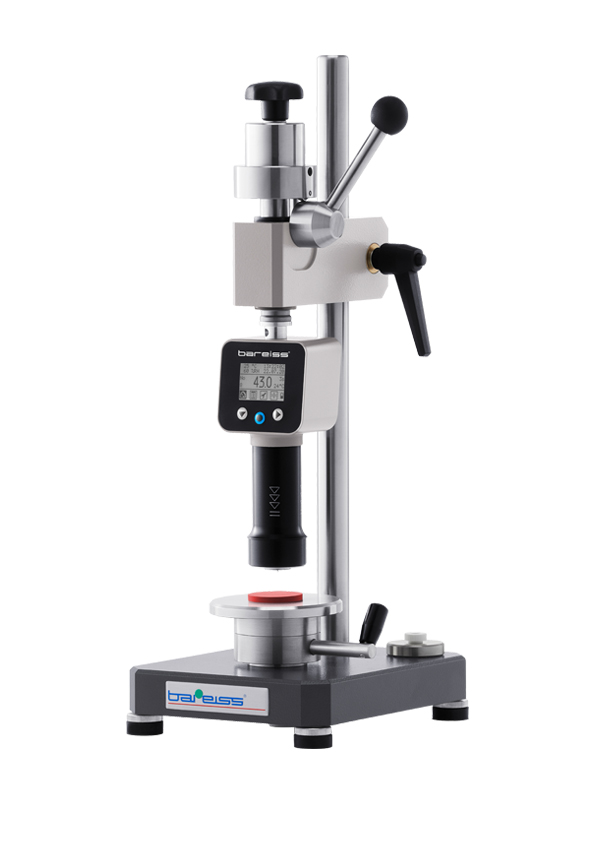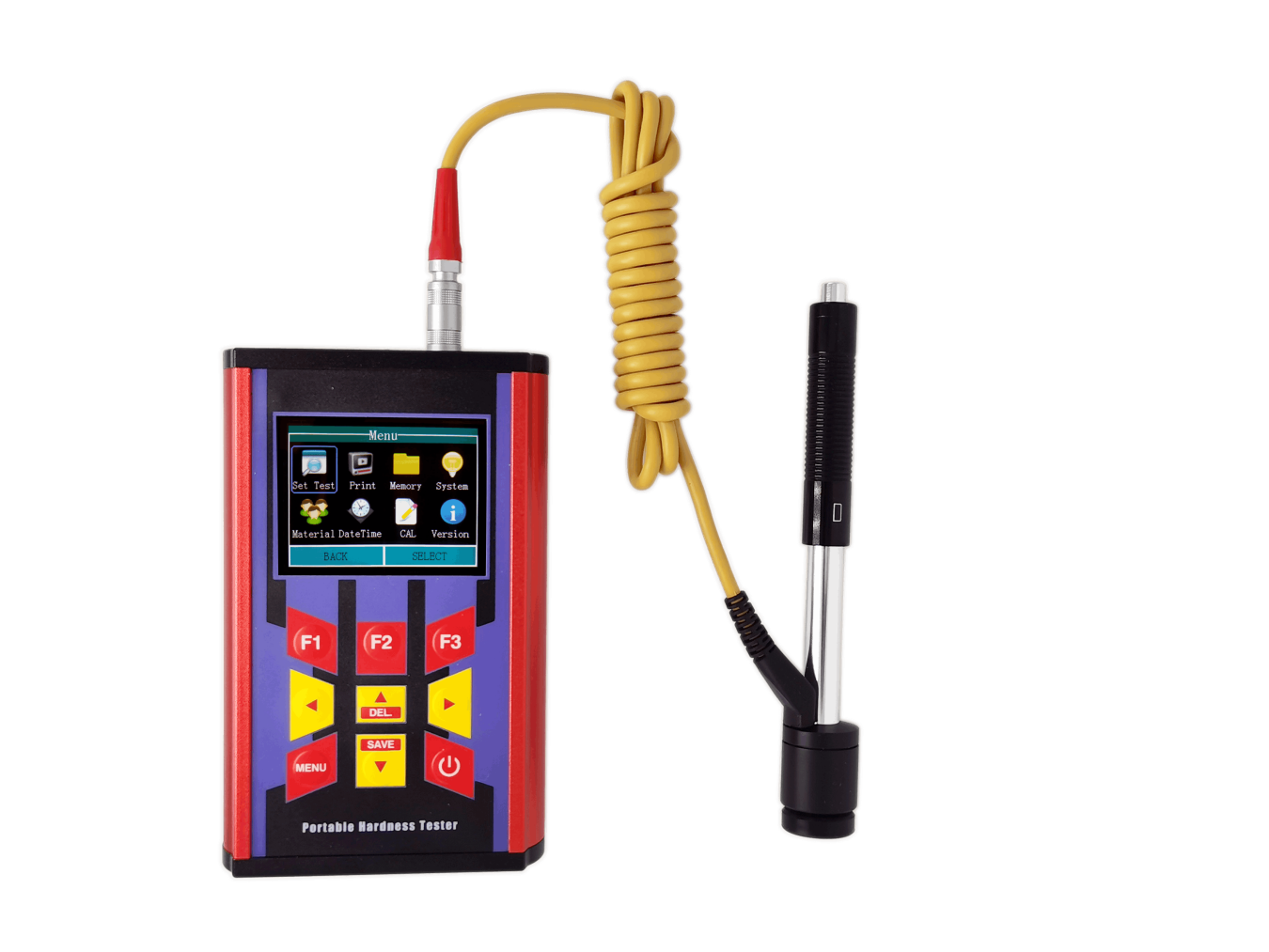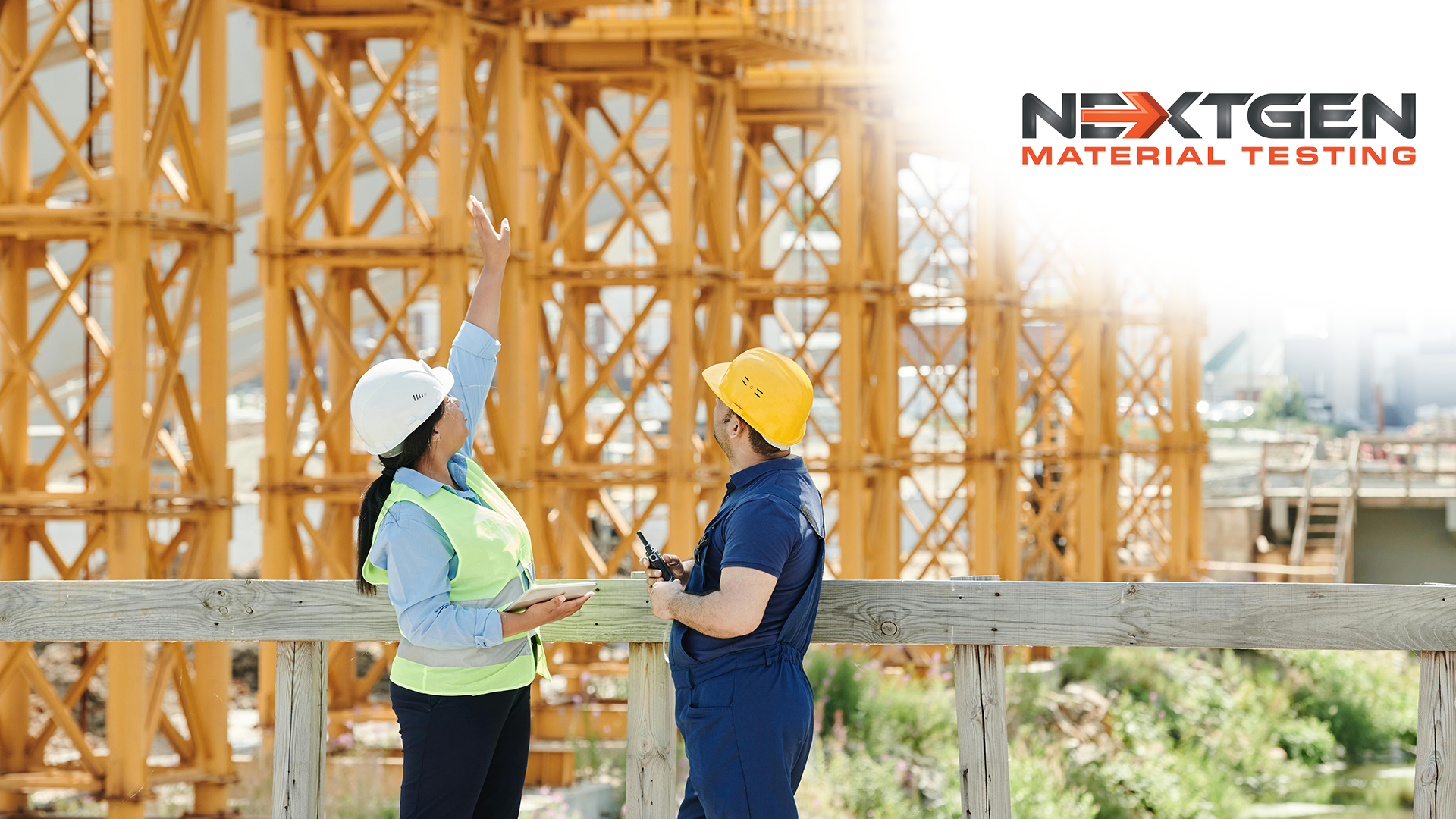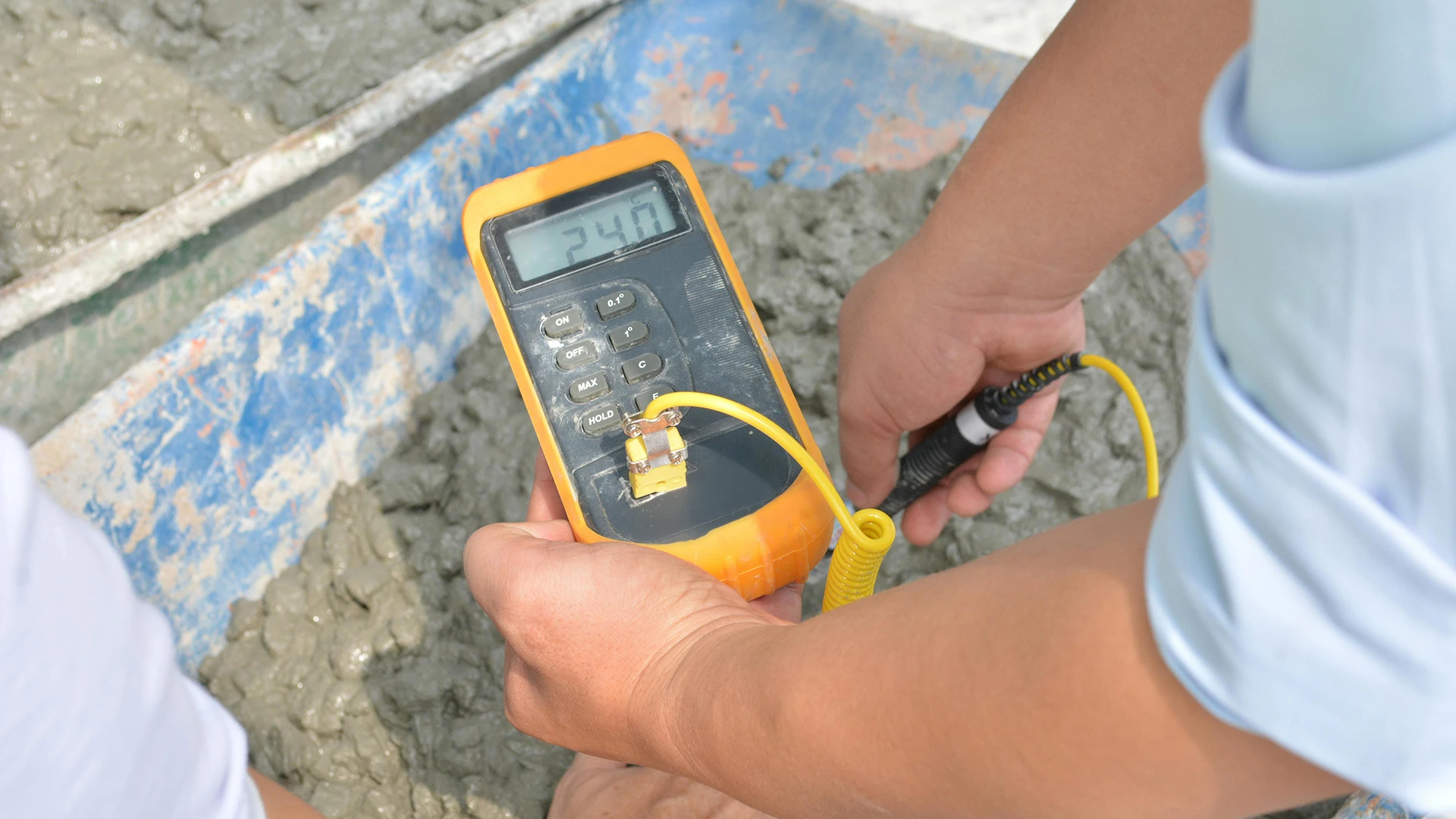Material testing often brings to mind sterile labs and rows of machines operated by experts in coats. Precision matters, and controlled environments help deliver it.
Still, not all testing happens behind glass doors. Increasingly, it’s done right where materials are used: at construction sites, along pipelines, or inside factories. This is called portable on-site material testing, sometimes referred to as field or mobile testing.
The idea is simple: bring the tools to the job instead of sending samples away. Using portable devices, technicians can measure strength, composition, or defects on the spot, whether it’s checking a steel beam, analyzing soil, or verifying welds. Results come faster, decisions follow sooner.
In this article, we’ll look at what types of tests are possible, what equipment is used, how it compares to lab-based testing, and where this approach is already making a difference.
What Portable On-Site Material Testing Actually Means
 Portable on-site material testing is the practice of analyzing materials directly at the location where they’re being used. Instead of extracting a sample, sending it to a distant lab, and waiting days for results, teams now perform many types of tests right at the jobsite. The idea is simple: take the testing tools to the field — not the field to the lab.
Portable on-site material testing is the practice of analyzing materials directly at the location where they’re being used. Instead of extracting a sample, sending it to a distant lab, and waiting days for results, teams now perform many types of tests right at the jobsite. The idea is simple: take the testing tools to the field — not the field to the lab.
This approach is sometimes called field testing, mobile material testing, or on-location testing. Some professionals refer to it by method, like non-destructive field inspection or jobsite verification. While the terminology varies, the concept remains the same: assess materials where they are, under the conditions they’ll be used in.
It applies to a range of materials:
- Metals in pipelines, bridges, or welded structures
- Concrete used in foundations, walls, and roadways
- Soils and aggregates on infrastructure sites
- Composites and plastics in manufacturing or aerospace
Portable testing can check for strength, hardness, composition, internal flaws, or surface integrity without removing the part or damaging it. That includes tasks like verifying if a pressure vessel is made from the correct alloy, checking the density of freshly placed concrete, or confirming soil compaction on a grading site.
Tools range from handheld devices, like XRF analyzers or hardness testers, to vehicle-based mobile labs used for asphalt and concrete testing. Some procedures take minutes and deliver instant results. Others replicate full-scale lab workflows inside compact mobile setups.
Why Use Portable Field Testing?
Testing materials directly on-site offers more than just convenience; it solves real-world problems that labs often can’t.
Faster results, quicker decisions.
When testing happens in the field, results come in minutes, not days. There’s no shipping. No waiting. If a batch of concrete fails strength criteria during a pour, that feedback arrives before the truck leaves. Adjustments follow the same day, not next week. On projects with tight schedules, this difference changes everything.
Lower costs, less waste.
Sending samples off-site adds costs — transport, lab fees, time. On-site testing cuts those out. It also helps avoid expensive mistakes. If a material fails specs, production can stop immediately. No large batch wasted, no rework. In infrastructure projects, mobile labs have helped teams test, correct, and move on without delays.
Testing the untouchable.
Some parts can’t be removed for testing. They’re too big, too critical, or simply in use. With portable tools, inspectors can check a turbine shaft, a pressure vessel, or a buried pipeline without cutting into it. Non-destructive techniques like ultrasonic testing or handheld analyzers make that possible — and safe.
Real conditions, real answers.
Lab tests happen in clean, controlled rooms. Job sites don’t work that way. Field testing shows how materials behave in their actual environment — heat, humidity, rough handling. A soil test done where the machine will sit tells you what really matters: can the ground hold it? That kind of relevance can’t be faked in the lab.
Better safety, lower risk.
When testing doesn’t damage the part, you’re not weakening the system. A five-second scan with an XRF gun can confirm a valve’s alloy without cutting it out. This kind of verification — fast, safe, and direct — helps prevent dangerous mix-ups, especially in industries where failure means real danger: petrochemicals, aviation, energy.
Stay compliant without slowing down.
Standards don’t go away on the jobsite. Some even demand that testing happens before work can proceed. New pipeline rules in the U.S., for instance, now require material property checks during maintenance. Portable tools make that feasible. The same goes for compaction tests, welding inspections, or concrete checks — all done on location, all feeding straight into quality reports.
On-Site Testing vs. Laboratory Testing
Lab testing and field testing aren’t rivals. They serve different needs and often work best when used together. Here’s how they compare and where each fits in.
Testing Environment and Control
Laboratories offer precision. Temperature, humidity, and equipment are tightly regulated. Tests follow strict procedures, and the setup stays stable. That’s hard to match outdoors. Field testing happens on uneven ground, in the wind, under pressure. Results might have slightly more variation, but today’s portable tools are built for this. Operators can take precautions, like shielding sensitive sensors or averaging multiple readings, to improve consistency. In short, labs give you accuracy in controlled conditions, while field tests offer answers under real ones.
Speed and Timing
Field testing delivers answers fast. A technician checks concrete strength or metal grade and has results within minutes. No shipping, no waiting. Lab results, though more detailed, take time. For many projects, the balance is clear: use on-site testing for quick decisions and send samples to the lab for final confirmation or deeper analysis. It’s a rhythm many teams rely on.
Available Testing Methods
Some tests simply need big machines or advanced instruments, a universal tester for pulling metal to failure, or a scanning microscope for seeing internal cracks. That’s lab territory. But many common checks now have field versions: handheld hardness testers, XRF and LIBS analyzers, and ultrasonic flaw detectors. These tools can evaluate composition, defects, strength estimates, and surface quality directly in the field. Still, if a project needs standardized tests for certification, like a 28-day concrete cylinder break, the lab remains the destination.
Accuracy and Reliability
Lab instruments detect minute differences. They run in clean rooms, operated by specialists. But portable devices have caught up. Today’s handheld analyzers can match lab-grade results for many elements, as long as they’re calibrated and used correctly. Some limitations remain; for example, very low trace elements may be harder to detect outside the lab. Also, formal standards (like ASTM or ISO) often require testing under lab conditions. Still, many field methods are standardized as well and, when done right, are highly dependable.
Cost and Practicality
Once purchased, portable tools make each test cheap: no shipping, no lab fees, no downtime. But that gear isn’t free: high-end analyzers can cost tens of thousands of dollars. Labs, on the other hand, charge per test but require no equipment investment. If you test daily, owning the tools pays off. If testing is rare, outsourcing makes more sense. There’s also the question of staff — field testing requires trained technicians on-site. Labs bring that expertise with them.
Safety and Compliance
Some tests involve hazards: X-rays, chemicals, and extreme forces. Labs are better suited to manage those risks. While portable tools are designed with safety in mind, field conditions aren’t always ideal. For certain environmental or regulatory tests, only certified labs are allowed to provide results.
How They Work Together
The most effective projects use both. On-site tests provide speed and responsiveness. Lab tests bring depth and certification. Together, they catch problems early and validate final results. A highway crew, for instance, might use portable gear to adjust compaction in real time, then send samples to the lab to verify density and asphalt mix. The field keeps working. The lab confirms it meets the spec.
Common Portable Material Testing Methods and Tools
Field material testing relies on a diverse toolkit tailored for various materials, from metals to concrete. Portable tools now allow many critical tests, previously confined to labs, to be performed on-site, quickly and reliably. These devices help assess strength, verify composition, detect flaws, and confirm compliance without dismantling structures or halting operations. Let’s explore the main categories of portable testing equipment used in the field.
1. Portable Hardness Testers
Portable hardness testers measure a material’s resistance to indentation, giving insights into strength, wear resistance, and heat treatment effectiveness.
The Leeb Rebound method is quick and popular, especially for large metal parts. Devices like the Equotip bounce a small body off the surface and measure rebound velocity to estimate hardness.
The UCI method (Ultrasonic Contact Impedance) uses a vibrating diamond probe to measure how deeply it indents the surface, ideal for smaller or hard-to-reach components like welds or gear teeth.
More traditional portable Rockwell and Brinell testers replicate lab-based methods but in a mobile format. They’re bulkier but allow direct testing in accordance with standard hardness scales, especially in heavy industries like steelmaking or pipelines.
2. Portable PMI Analyzers (Positive Material Identification)
PMI tools verify the chemical composition of metals on-site, necessary for confirming alloy grades and preventing mix-ups that can lead to failure.
Handheld XRF analyzers (X-ray fluorescence) are fast, non-destructive, and ideal for most alloys. They provide near-instant identification of steel grades, stainless types, and non-ferrous metals.
Portable OES analyzers (Optical Emission Spectroscopy) go further, detecting light elements like carbon, crucial for distinguishing low-carbon stainless (e.g., 316 vs. 316L). They require argon and leave a small mark but are highly accurate.
LIBS analyzers (Laser-Induced Breakdown Spectroscopy) combine portability with the ability to detect light elements. They’re especially helpful for carbon analysis and are growing in adoption alongside XRF and OES.
3. Portable Mechanical Property Testing Devices
These tools help estimate tensile or yield strength without needing lab-based destructive tests.
Portable Indentation Plastometry (e.g., PLX-Portable) uses controlled indentation and mathematical models to extract stress-strain properties from the surface. It provides lab-like accuracy for yield strength and is already used in pipeline safety and asset integrity assessments.
Hardness-to-strength correlations are also common: engineers convert field hardness readings into estimated tensile strength using standardized charts. It’s a fast way to infer material performance where full tensile tests aren’t feasible.
4. Portable NDT Equipment (Non-Destructive Testing)
NDT tools detect cracks, defects, or structural changes without damaging the part.
Ultrasonic Testing (UT) uses sound waves to detect internal flaws or measure thickness. It’s widely used in weld inspection, pipeline evaluation, and aerospace parts testing.
Magnetic Particle Testing (MT) identifies surface and near-surface cracks in ferromagnetic materials using magnetic fields and fine particles — ideal for welds or machine parts.
Dye Penetrant Testing (PT) highlights surface cracks on non-magnetic materials using dye and developer. It’s quick and commonly used on turbine blades, tanks, and stainless welds.
Eddy Current Testing (ET) identifies surface cracks and checks conductivity (related to heat treatment) in conductive materials. It’s often used in aerospace and power generation.
Radiographic Testing (RT) uses X-rays or gamma rays to visualize internal weld structure. Though slower, it’s essential where a permanent image is required, such as in code-mandated inspections.
5. Construction Material Field Testing Tools
Beyond metals, portable tools are essential for testing concrete, soil, and asphalt during construction.
Rebound hammers estimate concrete surface hardness and are useful for early strength assessments or condition surveys.
Maturity sensors log concrete temperature over time, estimating in-place strength, helping determine when to remove formwork or apply loads.
Soil density gauges (e.g., nuclear or sand cone methods) ensure proper compaction in earthworks, preventing settlement issues.
Asphalt field tools include nuclear gauges for checking mat density during paving and infrared thermometers for verifying mix temperature — key for long-lasting roads.
Real-World Applications of Portable On-Site Material Testing
So far, we’ve covered how on-site material testing works and what makes it useful. But where does it actually happen, and how does it change outcomes in the field?
The following cases come from different industries and regions. Each one shows how portable tools helped project teams catch problems early, confirm material specs, and avoid costly or dangerous mistakes.
Pipeline Safety Verification Under Tight Deadlines
In 2024, a major gas pipeline operator in the U.S. needed to comply with new federal rules requiring full documentation of material properties across its older network. Instead of cutting out pipe segments and sending them to a lab, the company hired a field inspection firm equipped with portable tools.
Technicians used a PLX-Portable indentation tester to measure yield and tensile strength directly on the exposed pipe. At the same time, crews ran handheld XRF and OES analyzers to confirm alloy composition — including carbon, which matters for certain steel grades. Within hours, they had detailed data: for example, one segment was confirmed as X52 grade steel, while another turned out to be stronger than records had shown.
This allowed engineers to update safety margins and meet documentation requirements without excavation delays. In total, dozens of pipeline sections were tested quickly and accurately, proving how portable field testing can support regulatory compliance and reduce service interruptions.
Aerospace Part Rejection Prevents Potential Failure
At an aircraft maintenance facility, inspectors found surface cracks in landing gear pins during a scheduled check. New pins were ordered, but before installation, technicians used handheld XRF to verify the alloy and a portable hardness tester to confirm strength.
Results showed a mismatch: the molybdenum content was off, and the hardness was too low for the intended 300M steel. The pins were rejected immediately. Later investigation revealed the supplier had mislabeled them.
Thanks to fast portable testing, the issue was caught before the pins were used. A potential structural failure was avoided, and the airline saved the time and cost of a major incident or investigation.
Refinery Turnaround with 100% Field Verification
During a scheduled maintenance shutdown at a petrochemical plant, every weld and new pipe section was checked on-site. LIBS analyzers verified filler metals in chrome-moly alloy piping, confirming correct welding practices. In one case, a weld was found to contain too little chromium, indicating the wrong wire had been used — it was cut out and redone.
Elsewhere, ultrasonic testing found a fusion defect in a high-pressure vessel weld that had passed an earlier X-ray inspection. The flaw was repaired before the restart. A mobile lab also ran compressive strength tests on freshly poured concrete for a tank foundation, helping confirm cure quality.
Together, these checks gave plant managers full confidence to bring the unit back online. The combination of chemical, mechanical, and structural field tests showed how portable tools can support safe restarts and prevent long-term risks.
Mobile Lab Keeps Infrastructure Project on Track (North America)
During a highway expansion, contractors used a mobile testing lab trailer stationed directly on the site. For every concrete pour, cylinders were cast and cured in a climate-controlled chest, then tested in a compression machine, sometimes as early as two days after casting. This helped teams make real-time decisions about formwork removal and load application.
When one batch tested below spec, the issue was caught immediately. Cores were taken, tested on-site, and the pier was reinforced before it caused delays. The lab also ran asphalt gradation tests multiple times per shift, detecting mix issues before entire road sections were paved.
Over the course of the project, the mobile lab saved several days on the schedule and avoided material waste — proof that fast testing leads to fast corrections.
Historic Bridge Assessment Without Damage (Europe)
Engineers assessing a 19th-century iron bridge needed material data — but couldn’t risk damaging the structure. Using a UCI hardness tester and handheld XRF on drilling shavings, they gathered enough information to estimate strength and composition.
Additional ultrasonic thickness gauging checked for section loss. With these non-invasive methods, the team concluded the iron was consistent and uniform but slightly below the new design load. Subtle reinforcements were added without removing original parts.
Local heritage authorities approved the approach, noting how portable tools made it possible to preserve historical integrity while upgrading structural capacity.
What These Cases Show
Across industries, from aviation to infrastructure, portable testing turns verification into a fast, flexible process. It stops problems before they grow, prevents safety risks, and lets teams respond in real time.
These examples also show how multi-method testing in the field (hardness, chemistry, flaw detection, strength) can match or complement lab-grade outcomes. The tools don’t replace labs in every case, but they allow more testing to happen earlier, right where it matters.
NexGen Material Testing Solutions for Portable Field Applications
At NexGen Material Testing, we offer a wide portfolio of instruments for both laboratory and portable testing applications. When it comes to field testing, whether on construction sites, in plants, or during maintenance operations, having the right tools on-site can be the difference between fast decisions and costly delays.
Let’s take a closer look at three of our most popular portable testing systems designed specifically for on-site material testing across metals, plastics, rock, and more:
Advanced Portable Shore Durometer System with Test Stand Options
 Our Advanced Portable Shore Durometer (HPE III) is a high-precision handheld device designed for hardness testing of plastics, rubbers, and elastomers — even in non-laboratory environments. Manufactured in Germany, the HPE III combines a lightweight aluminum casing, a built-in temperature and humidity sensor, and a patented handgrip system to ensure perpendicular and consistent pressure application.
Our Advanced Portable Shore Durometer (HPE III) is a high-precision handheld device designed for hardness testing of plastics, rubbers, and elastomers — even in non-laboratory environments. Manufactured in Germany, the HPE III combines a lightweight aluminum casing, a built-in temperature and humidity sensor, and a patented handgrip system to ensure perpendicular and consistent pressure application.
The system supports a range of Shore scales (A, D, 00, etc.) and displays not only hardness but also sample temperature and environmental humidity in real time. It features USB connectivity for test stand integration, data transfer, and battery charging. With intuitive one-handed operation, a large LCD, and data logging capabilities, the HPE III is a top-tier choice for automotive, aerospace, rubber, and polymer industries requiring reliable on-the-go hardness validation.
Point Load Tester: Portable Rock Strength Testing for Field Applications
 The Point Load Tester is engineered for fast, in-field rock strength evaluation. Designed for use in geotechnical and mining projects, this instrument calculates the strength index of rock samples under point load, which in turn helps estimate uniaxial compressive strength (UCS), detect anisotropy, and predict material behavior for tunneling, drilling, or foundation work.
The Point Load Tester is engineered for fast, in-field rock strength evaluation. Designed for use in geotechnical and mining projects, this instrument calculates the strength index of rock samples under point load, which in turn helps estimate uniaxial compressive strength (UCS), detect anisotropy, and predict material behavior for tunneling, drilling, or foundation work.
Its rugged and portable structure houses an integrated jack, a high-strength outer casing, and durable cemented carbide loading heads. It accommodates both prepared core samples and irregular rock fragments with minimal preparation. The electronic load system with LCD provides accurate, battery-powered performance even in remote environments, making this tester a valuable asset for geology teams, civil engineers, and field-based site investigations.
NG – LeebGen 3000: Leeb Rebound Portable Hardness Tester
 The LeebGen 3000 is NexGen’s flagship portable hardness tester for metals, built to bring high-accuracy testing directly to the jobsite. It uses the Leeb rebound method to provide instant readings of metal hardness in multiple scales, including Rockwell, Brinell, Vickers, and Shore. Thanks to its 360° automatic angle adjustment and built-in impact sensor, it delivers precise measurements regardless of testing orientation.
The LeebGen 3000 is NexGen’s flagship portable hardness tester for metals, built to bring high-accuracy testing directly to the jobsite. It uses the Leeb rebound method to provide instant readings of metal hardness in multiple scales, including Rockwell, Brinell, Vickers, and Shore. Thanks to its 360° automatic angle adjustment and built-in impact sensor, it delivers precise measurements regardless of testing orientation.
This compact tester features a high-contrast LCD screen, built-in data storage, USB connectivity, and even a Bluetooth printer. It comes standard with the universal D-type impact device, but supports a full range of specialized impact heads (DC, DL, G, C, etc.) for various geometries and materials, from large castings to delicate coatings. Whether you’re testing steel beams, gears, aluminum forgings, or critical welds, LeebGen 3000 offers lab-like functionality in your hands.
The Power of Portable On-Site Testing: Fast, Reliable, and Right Where You Need It
As industries move faster and demand greater flexibility, portable on-site material testing has emerged as a vital solution for real-time quality control. Whether it’s confirming the strength of concrete before pouring the next slab, checking metal alloy composition during maintenance, or validating rock strength on a remote site, field testing empowers teams to make informed decisions without delay.
Unlike traditional lab testing, portable systems bring the accuracy of modern instrumentation directly to where the work is happening, be it a construction site, refinery, mine, or repair facility. Today’s advanced portable equipment covers a wide spectrum of material types and properties, using compact, rugged, and increasingly automated tools to test in the field with speed and confidence.
And while lab tests still play a key role in final certifications or high-precision measurements, the ability to screen, verify, and adjust on the spot is invaluable, saving time, reducing cost, and improving safety outcomes across the board.
If you’re looking for high-quality equipment to perform on-site or in-field material testing beyond the lab, NexGen Material Testing Inc. offers a range of portable solutions for metals, plastics, rocks, and more. Whether you’re just exploring options or know exactly what you need, feel free to contact us directly with any questions or request a quote: we’re here to help you find the right solution for your project.


